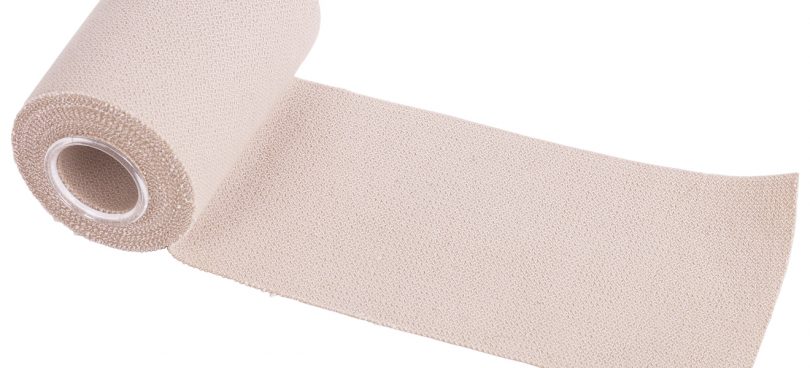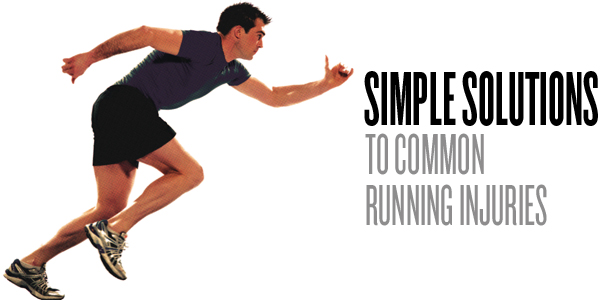Written by Rick Platt
Several years ago, John Tuttle, a 1984 Olympian, was suffering from constant pain in the arch and heel brought on by serious racing. I suggested that he use his thumb and fingers to give his entire foot a deep tissue massage, most importantly in the area where the arch meets the heel, digging in to the point of sensitivity and slight discomfort, but not pain. Within a month his pain was gone. After that, every time we saw each other at a race he thanked me for the advice.
Tuttle suffered from a condition called plantar fasciitis, and it’s just one of many injuries that are common among runners. My last column covered basic tips for preventing common injuries. Now I’ll discuss solutions for specific problem areas, tips and tricks that have worked for me over the years.
Lower Back Muscle Tightness
This is one of the most difficult areas to resolve because there isn’t one magic solution. You can apply a moist heat wrap to the area and use a massage stick before every workout, and massage the area above and below the pelvic crest (the sacroiliac, SI, joint) with your fingers, knuckles and hands. The most effective, long-term solution I’ve found is a specific Pilates routine, designed to work the core muscles, in particular the transverse abdominal muscle.
Adductor & Hip Flexors
Massage and Pilates are both helpful for tightness or strain. For a good stretch, lie on your back, with hips at the edge of a table or bed. To stretch the left side, pull your right knee into your chest, with a slight tilt towards the right shoulder. Your left leg should hang off the edge of the table or bed. Slowly bend the left knee towards you, feeling the stretch through the upper thigh and groin. Reverse to stretch the opposite side.
Iliotibial Band Syndrome (ITB)
This pain is felt on the outside of the legs, generally from the hip to knee, but most often just above the knee. It is caused by a tight or inflamed ITB muscle. A “cross-friction” massage from either a good sports massage therapist or physical therapist, and the standing “C” stretch, can ease the pain. Try the “C” stretch: From standing, cross one leg in front of the other and with arms overhead, lean into a wall. Your hips will push out in the opposite direction. Your legs, hips and arms will form the letter “C.”
Achilles/Calf Pain
Look at your shoes. If the heel is worn from your shoes reaching the end of their normal lifespan, get a new pair. Also, some racing flats are too low in the heel. If you have calf or Achilles problems, select a racing flat (if you wear them to improve your racing time) that has a higher heel relative to the forefoot. Massage therapy or trigger-point release can help with this pain. I’ve also found walking around the house after a hot shower, for as long as is comfortable, the most effective and long-term solution.
Plantar Fasciitis
Using your thumb and fingers, give your entire foot a deep-tissue massage. Dig in to the point of sensitivity and slight discomfort, but not pain. Concentrate on the area where the arch meets the heel. Do this before you take your first step out of bed in the morning (when plantar fasciitis pain is usually at its worst), again before you start running—sometimes multiple times in the first few miles of your run—then after the run, until the injury subsides.
Stress Fractures
For stress fractures of the foot or tibia, three to six weeks off is commonly needed for the bone to heal, more for fractures of the pelvis. If you come back too soon, the fracture will return. You also need to resolve the issues in your training that caused the initial fracture.
Shin Splints
Try the “paint can” exercise: Sit on a table, with your legs dangling over the edge, and hang a paint can from one foot. Lift the can using the top of your foot. Repeat 10 or more times on each foot.
Runner’s Knee
This pain, felt on and around the kneecap, is caused by weak thigh muscles. One solution is straight-leg lifts. At first the weight of the leg alone may be enough, but eventually build up to regular shoes, then hiking boots, then light ankle weights. Lie on your back, legs straight, and raise one leg about a foot or more off the ground, tensing the quad muscles. Hold for 10 seconds, lower and rest for up to five seconds. Repeat 10 times on each side, several times a day. Other solutions include using a stair-climbing machine, avoiding hard surfaces and varying your pace so you stress the legs in different ways. Sitting at a computer for long times, or driving long distances is also especially bad for runner’s knee.
Rick Platt has been president and newsletter editor of the Colonial Road Runners since 1994 and offers personal running coaching. He has been a serious competitive runner for 46 years, and after running a 39:17 for 10K last October was ranked #2 in his age group (60-64) for 2010 by the Washington Running Report.






